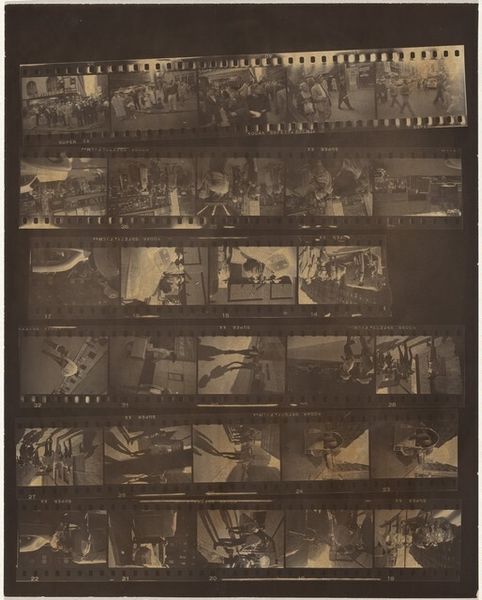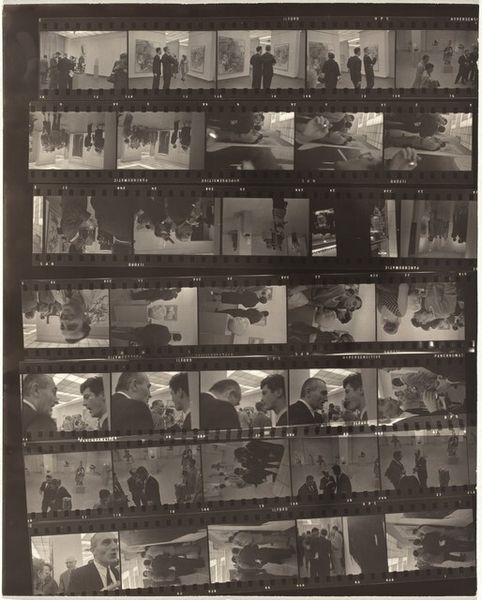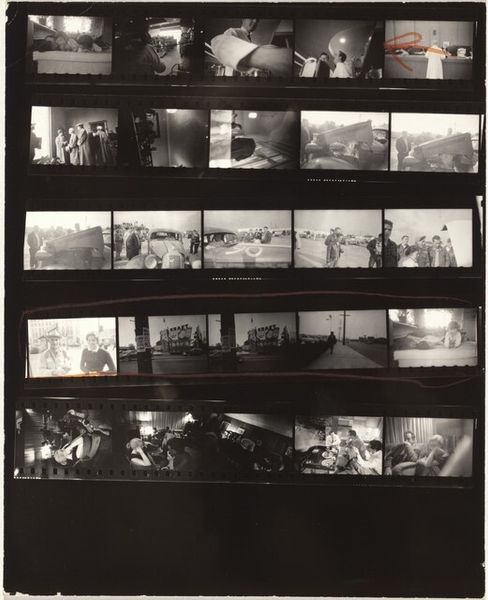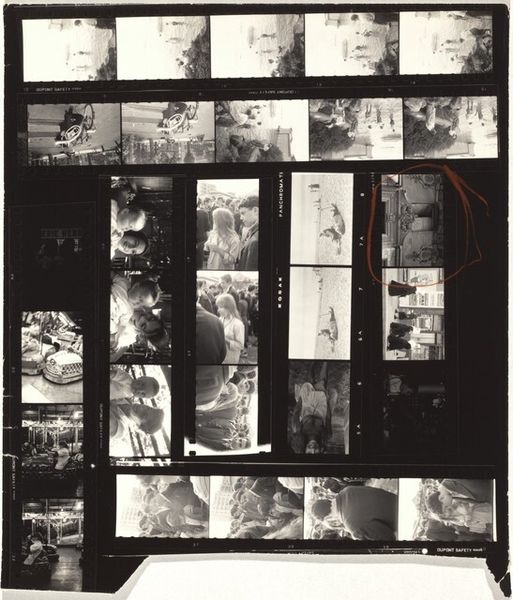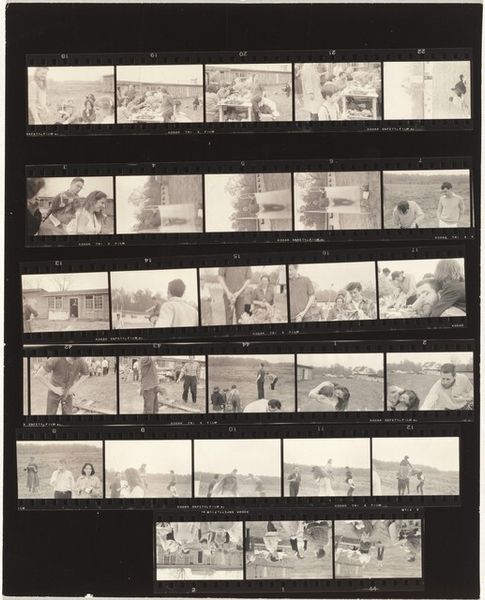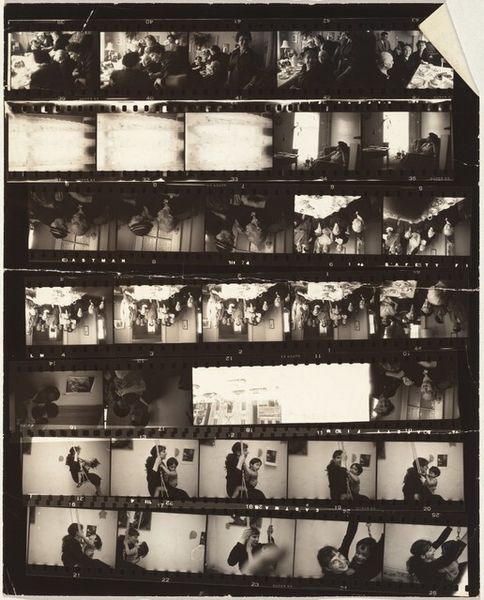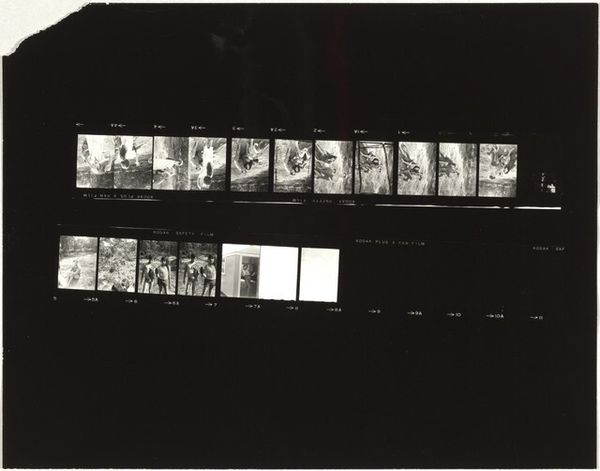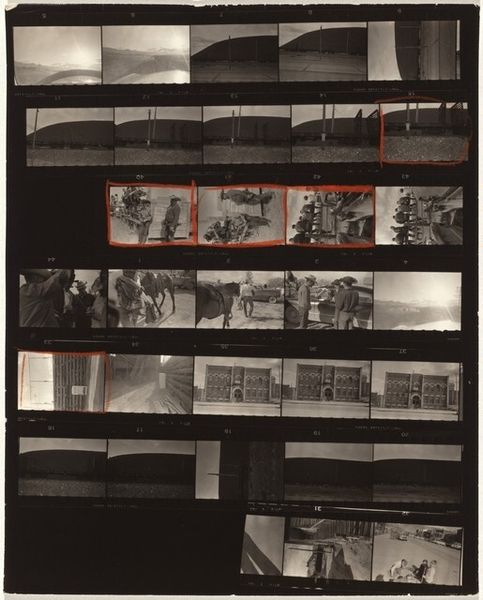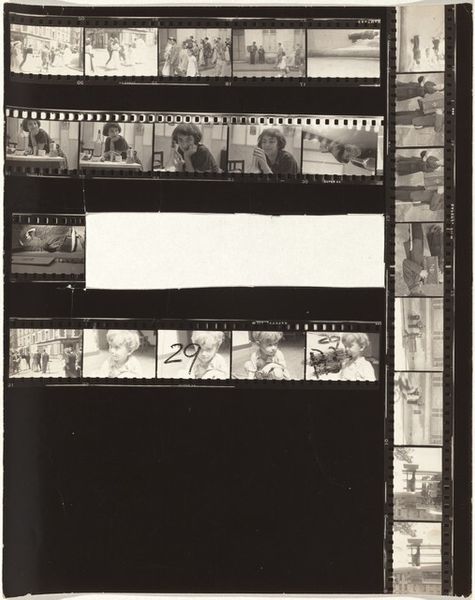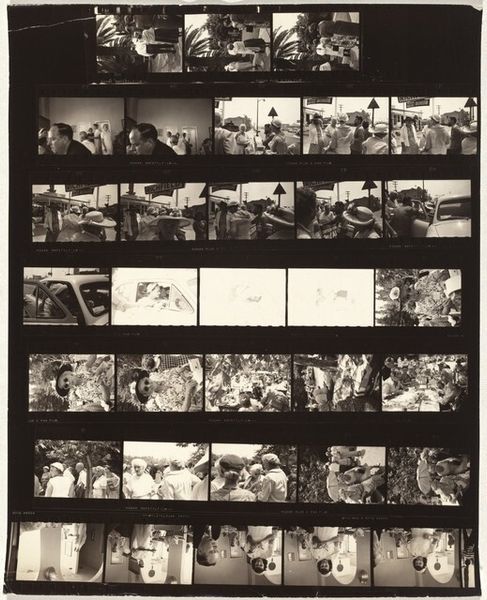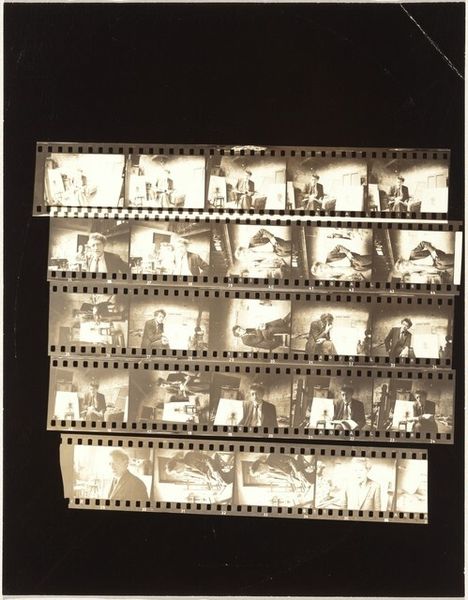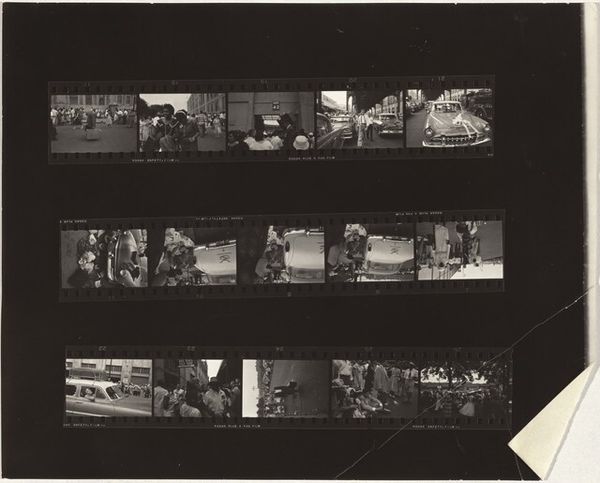
Dimensions: overall: 25.3 x 20.3 cm (9 15/16 x 8 in.)
Copyright: National Gallery of Art: CC0 1.0
Editor: Robert Frank’s 1954 gelatin silver print, "Andrea as infant", shows what looks like the artist's unedited roll of film. I'm fascinated by how raw and personal this feels, especially with all the varied shots displayed at once. What jumps out at you? Curator: The immediate visual impact stems from Frank's use of the film strip itself as the organizing structure. Each frame functions as a distinct unit, but collectively they offer a fragmented, non-linear narrative. Consider the tonal range – the deep blacks against stark whites – which creates a rhythm across the composition. How does this rhythm affect your reading of the subject matter? Editor: It almost feels like a memory reel, capturing different moments and perspectives. Some frames are clear and focused, while others are blurred, enhancing that fragmented effect you mentioned. It’s not just a portrait, it is the passage of time and experience. Curator: Precisely. Note Frank's intentional inclusion of sprocket holes and the film's edge, reminding us of its materiality and photographic process. Do you see how this disrupts the illusionistic qualities of a traditional photograph? Editor: Yes, it breaks down the boundary between the image and its creation. Instead of hiding the mechanics, he puts them on full display. Curator: Exactly. Frank uses the photograph as a space where process and subject are inextricably linked. What began as simply exposing some film has become, in effect, its own finished artwork. Editor: This was enlightening. I never thought about how much the form and the materials contribute to the emotional impact of a piece like this. Curator: Indeed. It showcases how inherent elements contribute significantly to an artwork’s overall significance.
Comments
No comments
Be the first to comment and join the conversation on the ultimate creative platform.
